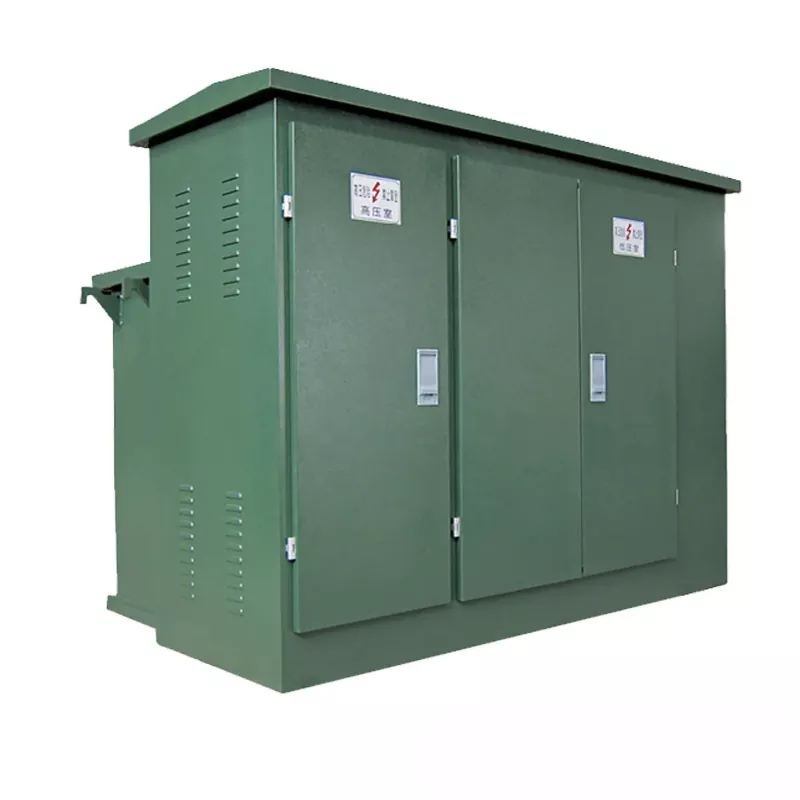Box Type Substation: Essential Infrastructure for Efficient Power Distribution
2024-12-05
Box type substations have become a crucial element in the modern electrical distribution network. As the demand for reliable and efficient power supply grows across residential, commercial, and industrial sectors, the need for compact, flexible, and secure substations has never been more important. Box type substations are specifically designed to meet these needs, providing a versatile solution for electrical power distribution in various environments.
In this blog, we will explore what box type substations are, their components, benefits, and their role in the power distribution system.
What is a Box Type Substation?
A box type substation (BTS) is a compact, pre-assembled power distribution unit designed to house electrical equipment, including transformers, circuit breakers, switchgear, and busbars, all within a single protective enclosure. The purpose of these substations is to step down the high voltage electricity transmitted through power lines to a lower, safer voltage that can be used by businesses, homes, and other establishments.
These substations are typically installed in areas where space is limited, such as densely populated urban locations or industrial zones, and can be easily integrated into both existing and new power distribution networks.
Key Components of Box Type Substations
1. Transformer: The transformer is the heart of the substation. It steps down the incoming high-voltage electricity to the appropriate voltage needed for local distribution.
2. Circuit Breakers: These devices are responsible for protecting the substation equipment from faults by interrupting the current flow during an electrical fault.
3. Switchgear: Switchgear is used for controlling, protecting, and isolating electrical equipment in the substation. It ensures safe operation by allowing for the easy disconnection and reconnection of power circuits.
4. Busbars: Busbars are metallic strips used to conduct electricity within the substation. They are designed to connect the various electrical components and distribute power efficiently.
5. Control Panel: The control panel allows operators to monitor and control the substation's electrical systems. It provides information about voltage, current, and other key parameters.
6. Protection Relays: These devices automatically detect faults in the electrical network and trigger the circuit breakers to shut off power, preventing damage to the equipment.
Benefits of Box Type Substations
1. Space Efficiency: Box type substations are designed to be compact and space-saving, making them ideal for urban environments or locations where space is limited. The entire unit is pre-assembled and housed in a weatherproof enclosure, reducing the need for large, standalone substations.
2. Cost-Effective: Since box type substations are pre-fabricated and factory-tested, they reduce installation costs and time. The entire system arrives at the site ready for operation, eliminating the need for extensive on-site assembly.
3. Flexibility and Scalability: Box type substations can be customized to suit various voltage levels and configurations. This flexibility allows for easy upgrades or expansions as power demands grow or change.
4. Reduced Maintenance: The enclosed design protects sensitive electrical equipment from environmental factors such as dust, moisture, and extreme temperatures, which can extend the lifespan of the components and reduce the need for frequent maintenance.
5. Safety: Box type substations are equipped with various safety mechanisms, including circuit breakers and protection relays, ensuring that the system operates safely and efficiently. The enclosed design also reduces the risk of accidental contact with live electrical parts.
6. Environmental Protection: The compact, modular nature of box type substations reduces their environmental footprint. Many modern designs feature energy-efficient components and incorporate eco-friendly materials, contributing to sustainability goals.
Applications of Box Type Substations
Box type substations are versatile and can be used in a wide range of applications. Some of the common uses include:
- Urban Areas: In cities where space is limited, box type substations provide an ideal solution for distributing power while minimizing the physical footprint.
- Industrial Zones: Factories and large industrial complexes often require customized substations to meet their specific power needs. Box type substations can be tailored to accommodate high power demands.
- Residential Complexes: High-density residential areas may use box type substations to efficiently manage the electricity supply to multiple buildings or housing units.
- Renewable Energy Integration: With the growing adoption of renewable energy sources like solar and wind, box type substations are increasingly used to connect these energy systems to the grid, helping to distribute clean energy more efficiently.
Installation and Maintenance Considerations
When installing a box type substation, several factors must be considered, including location, accessibility for maintenance, and environmental conditions. These substations should be placed in areas that are easily accessible to maintenance crews for regular inspections and service.
Although box type substations are low-maintenance due to their protected design, periodic checks are still necessary to ensure the components are functioning properly. Regular inspections can prevent potential failures and prolong the lifespan of the substation.
Conclusion
Box type substations are an essential component in today’s electrical distribution networks, offering a space-efficient, cost-effective, and safe solution for stepping down voltage and distributing power. With their versatility, customizable designs, and minimal maintenance needs, these substations are ideal for a variety of settings, from urban areas to industrial zones. As the world moves toward more sustainable energy systems, the role of box type substations will only grow in importance, supporting the reliable and efficient distribution of electricity to meet the increasing demand for power.



